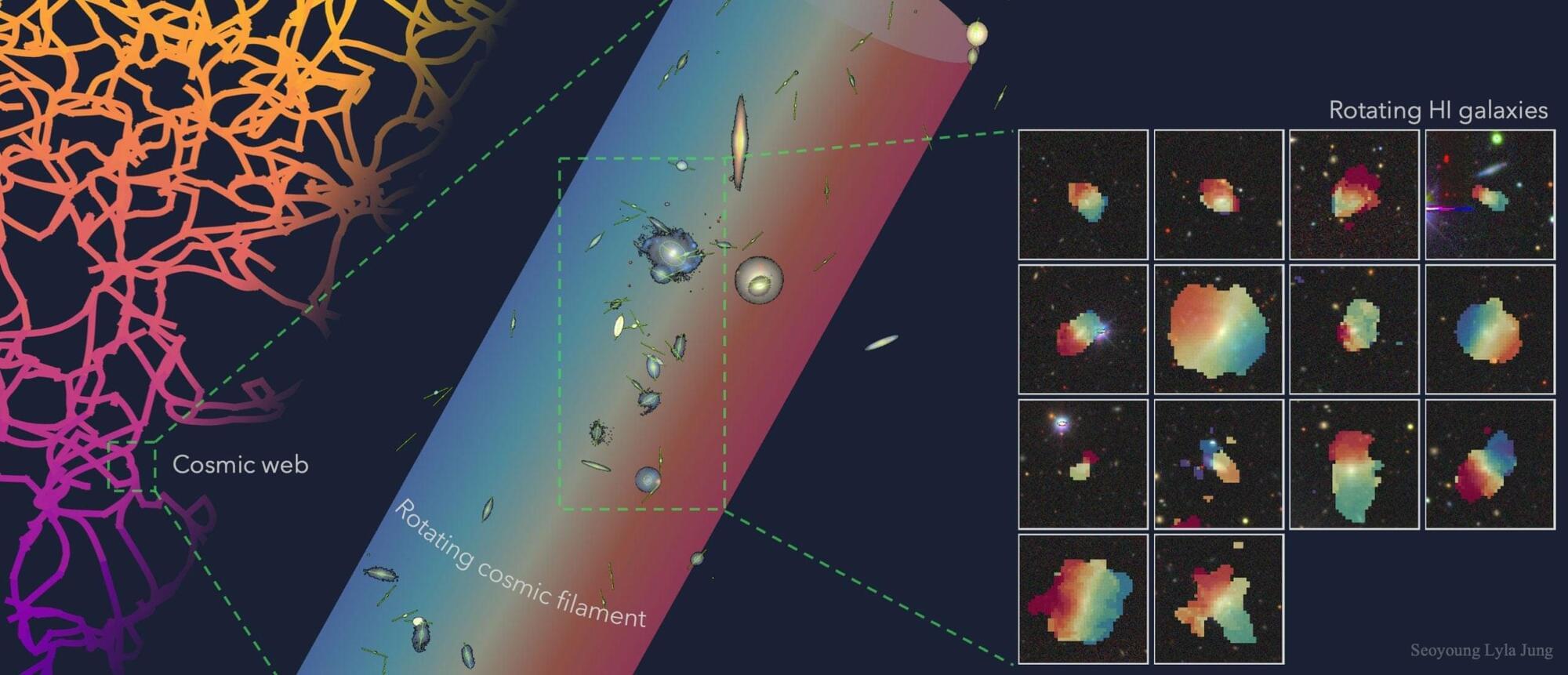Researchers have found a razor-thin, rotating string of galaxies inside a massive cosmic filament, revealing unexpected alignments that challenge models of how galaxies gain their spin. An international research group led by the University of Oxford has uncovered one of the most extensive rotatin









